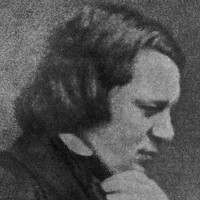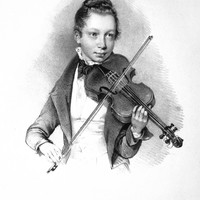Beethoven’s First Symphony with Tabea Zimmermann

Sponsored By
- October 11, 2019


Sponsored By

The Hungarian composer Sándor Veress studied with his country’s two musical giants, Bartók and Kodály, and he later joined Bartók as an ethnomusicology research assistant. Veress weathered the years of World War II in Budapest, but when political disturbances at home finally pushed him into exile, the Swiss conductor and patron Paul Sacher helped get Veress established in Berne, Switzerland. Sacher also introduced Veress’ Four Transylvanian Dances to Berne audiences, composed in stages between 1943 and 1949. Veress did not quote specific folksongs in these dances for string orchestra, but years of research had left those melodies deeply ingrained in his musical DNA. There are also clear signs of Bartok’s influence beyond ethnomusicology, like when the opening Lassu creates balanced stacks of perfect-fourth intervals and symmetrical gestures. In traditional Hungarian dancing, the slow and freeform Lassu would serve as a prelude for a faster dance, supplied here in the form of an Urgós, a couple’s style filled with athletic leaps. The Lejtős and Dobbantós constitute another slow-fast pairing, with the final selection evoking rustic folk fiddling.
Aaron Grad ©2019
 Listen to Audio
Listen to Audio
Shortly after beginning a new job in Dusseldorf in 1850, Schumann spent two weeks drafting the score he originally titled Konzertstück, or “Concert Piece,” for cello and orchestra. He canceled a scheduled premiere in 1852, and then delayed its publication until 1854, relabeled as a Cello Concerto. This pioneering composition does contain the three typical movements of a concerto, but the original heading of Konzertstück captures Schumann’s desire to create a more integrated and continuous form, rather than a showy concerto full of virtuosity for its own sake. To that end, he dispensed with a hefty orchestral introduction, connected the three movements with linking material, and included orchestral accompaniment during a solo cadenza, among other departures from traditional concerto form.
Aaron Grad ©2019
 Listen to Audio
Listen to Audio
 Watch Video
Watch Video
Ludwig van Beethoven, born into a musical family in the German city of Bonn, left his hometown for Vienna in November of 1792, at the age of 21. The aim of the trip, as his patron Count Ferdinand von Waldstein famously put it, was for the young composer to “receive Mozart’s spirit from Haydn’s hands.” The Elector of Bonn had released Beethoven from his performing and composing duties, with the expectation that he would study for a time with Haydn and then return to serve the court that had employed three generations of the Beethoven family.
Beethoven did study with Haydn, working mainly on counterpoint, but their short-lived tutelage ended when Haydn accepted an offer to spend a season in London, at which point he passed Beethoven off to another teacher. Beethoven’s period of study with Haydn had only a modest impact on his composing, but his chance to test the waters in the Vienna proved life-altering. Filling a void left by Mozart’s death in 1791, Beethoven was able to establish himself as the city’s premier keyboard virtuoso and improviser. He cut his ties with Bonn and pieced together enough work to embark on a freelance career.
Early on, Beethoven shied away from Haydn’s two signature genres: the symphony and the string quartet. Beethoven finally wrote his first quartets, a set of six grouped as Opus 18, between 1798 and 1800. As for symphonies, Beethoven made an attempt in 1795-96 (after hearing Haydn’s London Symphonies), but he did not complete one until 1800. He debuted the work on April 2 on his first benefit concert at the Burgtheater, the same venue where Mozart had presented his own popular concert series.
Beethoven’s First Symphony honors the Viennese tradition of Haydn and Mozart, and yet it also contains a germ of independence. The most striking departure comes in the very first sonority, an unstable chord that resolves away from the home key and only cycles back to the proper tonal center of C major after a drawn-out, tantalizing introduction. When the main theme enters in the new Allegro con brio tempo, it plays with a figure that repeatedly confirms the proper home key, as if to brush away the initial uncertainty.
In a sign of the interconnectivity that distinguishes all of Beethoven’s symphonies, the second movement starts with the same ascending interval (a perfect fourth) that was so central in the first movement. A distinguishing characteristic of this slow movement is its rich and independent writing for winds, with a scoring that includes trumpets and timpani.
The third movement, though labeled a minuet, is closer in spirit to the wild scherzos of the later symphonies. The contrasting trio section showcases Beethoven’s keen sense of humor, with scampering runs in the strings popping up between chorale phrases in the woodwinds. The finale brings this fledgling symphony full circle with another slow introduction. The violins test an ascending scale, adding a note at a time; when they reach the top of the octave, they launch a bright and hearty valediction.
— © Aaron Grad
Aaron Grad ©2017
Get driving directions and find nearby parking.
Find dining options close to the venue.
View seating charts to find out where you'll be seating.
Get driving directions and find nearby parking.
Find dining options close to the venue.
View seating charts to find out where you'll be seating.
